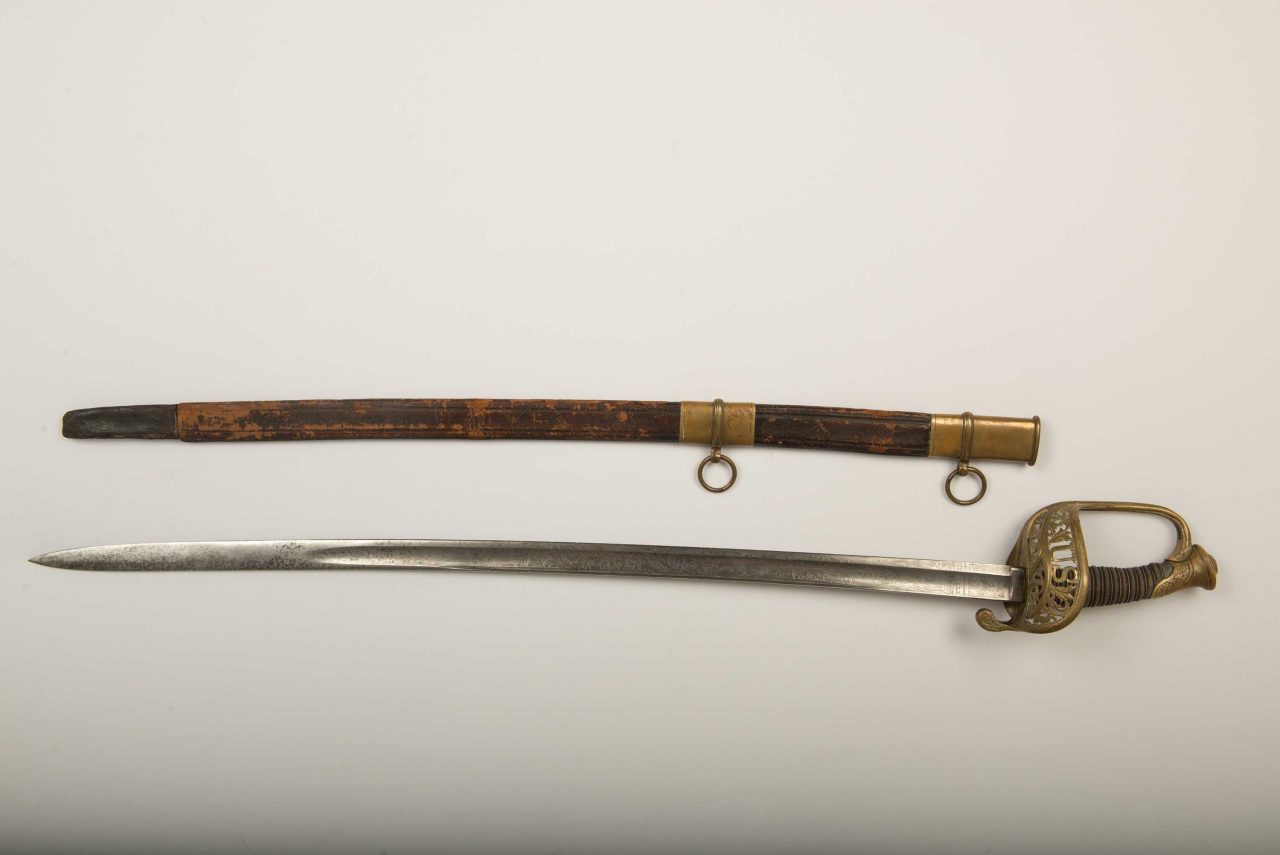A new exhibit at Milner Library shows how the incredible story of Illinois State University’s first president, Charles Hovey, led to Founders Day becoming the tradition it is today.
Building a Legacy: The Life and Service of Charles Edward Hovey was created by University Archives and uses historical artifacts and documents to illustrate how Hovey became the University’s first president at age 30, served his country during the Civil War, and maintained close ties to Illinois State after he served as its president.
“Illinois State University has a great history, and it is always a point of pride when we can bring out some of our materials from that history to share with the public,” Shari Zeck, interim dean of Milner Library.
Hovey was selected by the Illinois Board of Education to become the first principal of a new state university designed to train teachers and founded by lawyer and businessman Jesse Fell. From 1857 to 1861, Hovey served as the first president of what was then called Illinois State Normal University. He believed strongly in the power of education and was passionate about helping the development of all students. This belief extended to students who were mobilizing to fight in the Civil War.
“Hovey would see students and faculty marching around campus and doing drills themselves,” Illinois State University Archivist April Anderson-Zorn said. “He realized early on that the war was not going to end quickly, and these people who were moved to fight needed proper training.”

Illinois State University Archivist April Anderson-Zorn was compelled to create the display to educate the Redbird community about Hovey’s life.
Hovey left his position at Illinois State to fight in the war. He served as colonel and later brigadier general with the 33rd Illinois Volunteer Infantry Regiment and Gen. William Sherman’s army before being shot in the shoulder during the Battle of Arkansas Post in 1863. After leaving the military, Hovey was honored with the rank of major general to recognize his exceptional level of service.
Hovey stayed in Washington, D.C., after the war, as an attorney and pension lobbyist fighting to ensure veterans were compensated. He maintained a close relationship to Illinois State University, his last visit occurring only a few weeks before his death in 1897. He often returned to visit Old Main, a building he was driven to see built during his tenure as president as he believed it was critical to the viability of the University.
Founders Day first started being held in 1909, but a day of events honoring Hovey in 1913 elevated the tradition’s status to what it is today. University leaders at the time got in touch with Hovey’s former students and fellow soldiers so they could speak about the impact he had on them.
“Everyone spoke beautifully of how great a leader Hovey was, how inspiring he was,” Anderson-Zorn said.
Hovey’s battle-used swords were donated to Illinois State by his family in the same year, the first donation of historical significance gifted to the University. The swords have made frequent appearances at campus events and are prominent in the exhibition. Anderson-Zorn is looking forward to seeing the Redbird community at Milner Library getting up close and personal with Hovey’s story.
“I believe that when you touch history it becomes real,” Anderson-Zorn said. “That is why I bring out the swords whenever I can and why I wanted to create this exhibition.”
Building a Legacy: The Life and Service of Charles Edward Hovey will be on display on the first floor of Milner Library through May 12, 2019.

